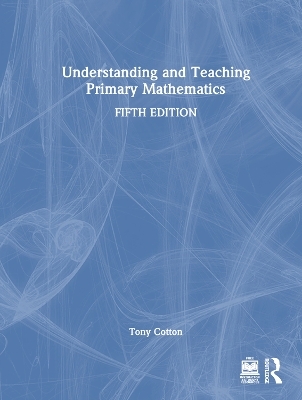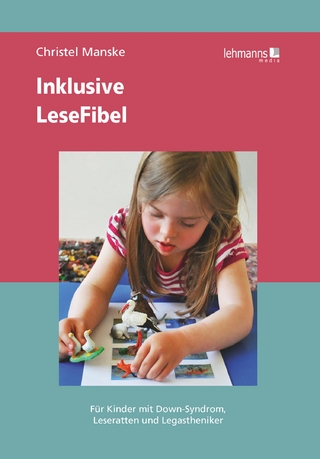
Understanding and Teaching Primary Mathematics
Routledge (Verlag)
978-1-032-69195-4 (ISBN)
Written by an experienced teacher and teacher educator with widespread experience of teaching mathematics in the UK and internationally, the bestselling Understanding and Teaching Primary Mathematics combines pedagogy and subject knowledge to build confidence and equip you with all the skills and know-how you need to successfully teach mathematics to children of any age.
This fifth edition has been completely updated to include the latest developments in learning and teaching mathematics, including mastery approaches, a Singapore approach and the use of manipulatives in the primary classroom. There are new activities for you to use in your teaching and links to the dedicated website, which contains materials to develop a personal portfolio, more activities to use in your classroom and presentations and podcasts to support your further professional development to reflect the latest research developments. It covers all areas of the mathematics curriculum and will allow you to become a confident teacher of mathematics through developing your own subject knowledge.
Tony draws on his many years of experience teaching mathematics and working with early career teachers to share classroom activities which will support you in learning mathematics through engaging in mathematical activity with your learners.
Tony Cotton is the editor of Mathematics Teaching, a previous honorary secretary of the ATM and a member of the ATM for over 40 years. He started his career teaching mathematics in secondary schools in Sheffield, then worked as an advisory teacher for anti-racist and multicultural education, before teaching on secondary and primary teacher education courses in Nottingham and Leeds, becoming the head of the School of Education and Childhood at Leeds Metropolitan University. In 2012, he left the University sector to work full time as a writer and freelance educational consultant.
Contents
Preface to fifth edition
Acknowledgements
Chapter 1: Teaching and Learning Primary Mathematics
Introduction
Starting point
Why is mathematical subject knowledge important?
What is good mathematical subject knowledge?
What makes a good teacher of mathematics?
How will this book develop my subject knowledge
A framework for teaching mathematics
Foundations for learning mathematics
Organisation of the book
The companion website
Summary
Chapter 2: What Should I Know? What Do I Know?
Introduction
Starting point
Auditing your current knowledge
Summary
Going further
Chapter 3: Recent developments in mathematics teaching
Introduction
Growth mindset
Cognitive load theory
What is Singapore mathematics?
A history of teaching for mastery
What is teaching for mastery?
Developing teaching for mastery in your classroom
Mathematical thinking
Variation
Summary
Going further
Chapter 4: Problem Solving Using Mathematics
Introduction
Progression in problem solving using mathematics
Big ideas
Teaching points
In practice
Assessing problem solving using mathematics
Cross-curricula teaching of problem solving
Summary
Reflections on this chapter
Going further
Chapter 5: Counting: place value; fractions, decimals and percentages
Introduction
Progression in counting: place value; fractions, decimals and percentages
Big ideas
Teaching points
In practice
Assessing counting: place value; fractions, decimals and percentages
Cross-curricula teaching of counting: place value; fractions, decimals and percentages
Summary
Reflections on this chapter
Going further
Chapter 6: Knowing and using number facts
Introduction
Progression in knowing and using number facts
Big ideas
Teaching points
In practice
Assessing knowing and using number facts
Cross-curricula teaching of knowing and using number facts
Summary
Reflections on this chapter
Going further
Chapter 7: Calculation: addition, subtraction, multiplication and division
Introduction
Progression in calculation: addition, subtraction, multiplication and division
Big ideas
Teaching points
In practice
Assessing calculation: addition, subtraction, multiplication and division
Cross-curricula teaching of calculation: addition, subtraction, multiplication and division
Summary
Reflections on this chapter
Going further
Chapter 8: Algebra
Introduction
Progression in algebra
Big ideas
Teaching points
In practice
Assessing algebra
Cross-curricula teaching of algebra
Summary
Reflections on this chapter
Going further
Chapter 9: Geometry: Properties of shapes; position and direction
Introduction
Progression in properties of shapes; position and direction
Big ideas
Teaching points
In practice
Assessing properties of shapes; position and direction
Cross-curricula teaching of properties of shapes; position and direction
Reflections on this chapter
Going further
Chapter 10: Measurement
Introduction
Progression in measurement
Big ideas
Teaching points
In practice
Assessing measurement
Cross-curricula teaching of measurement
Reflections on this chapter
Going further
Chapter 11: Statistics and Handling Data
Introduction
Progression in statistics and handling data
Big ideas
Teaching points
In practice
Assessing statistics and handling data
Cross-curricula teaching of statistics and handling data
Reflections on this chapter
Going further
Chapter 12: Teaching and Learning Mathematics in the Early Years
Introduction
Starting point
Problem solving, reasoning and numeracy
Young children learning number
Young children learning measures
Young children learning shape and space
Young children learning algebra
Creating a mathematically rich environment
Assessment in the early years
Summary
Refections on this chapter
Chapter 13: Issues of Inclusion
Introduction
Starting point
Children with special educational needs
Pupils learning English as an additional language (EAL)
Pupils with social, emotional and mental health needs
Autistic pupils
Pupils with developmental coordination disorder (DCD or dyspraxia)
Dyslexic pupils
Pupils with dyscalculia
Pupils who are gifted and talented
Multicultural and anti-racist approaches
Summary
Reflections on this chapter
Chapter 14: ICT and the Use of Calculators in Teaching and Learning Mathematics
Introduction
Starting point
Progression in using calculators
A calculator aware curriculum
The appropriate use of personal computers and other devices
Summary
Reflections on this chapter
| Erscheinungsdatum | 19.09.2024 |
|---|---|
| Zusatzinfo | 47 Tables, color; 170 Halftones, color; 170 Illustrations, color |
| Verlagsort | London |
| Sprache | englisch |
| Maße | 189 x 246 mm |
| Gewicht | 1300 g |
| Themenwelt | Sozialwissenschaften ► Pädagogik ► Schulpädagogik / Grundschule |
| ISBN-10 | 1-032-69195-6 / 1032691956 |
| ISBN-13 | 978-1-032-69195-4 / 9781032691954 |
| Zustand | Neuware |
| Informationen gemäß Produktsicherheitsverordnung (GPSR) | |
| Haben Sie eine Frage zum Produkt? |
aus dem Bereich


